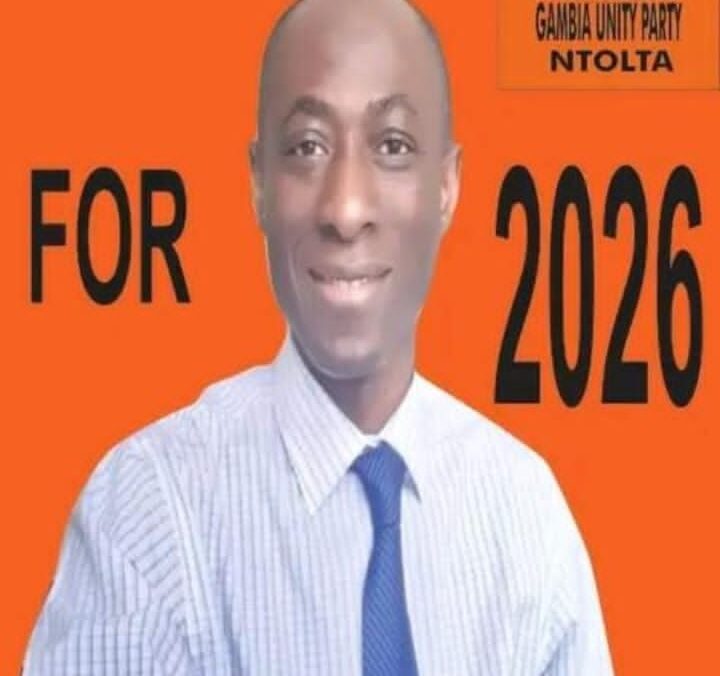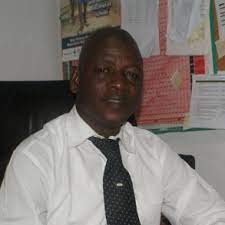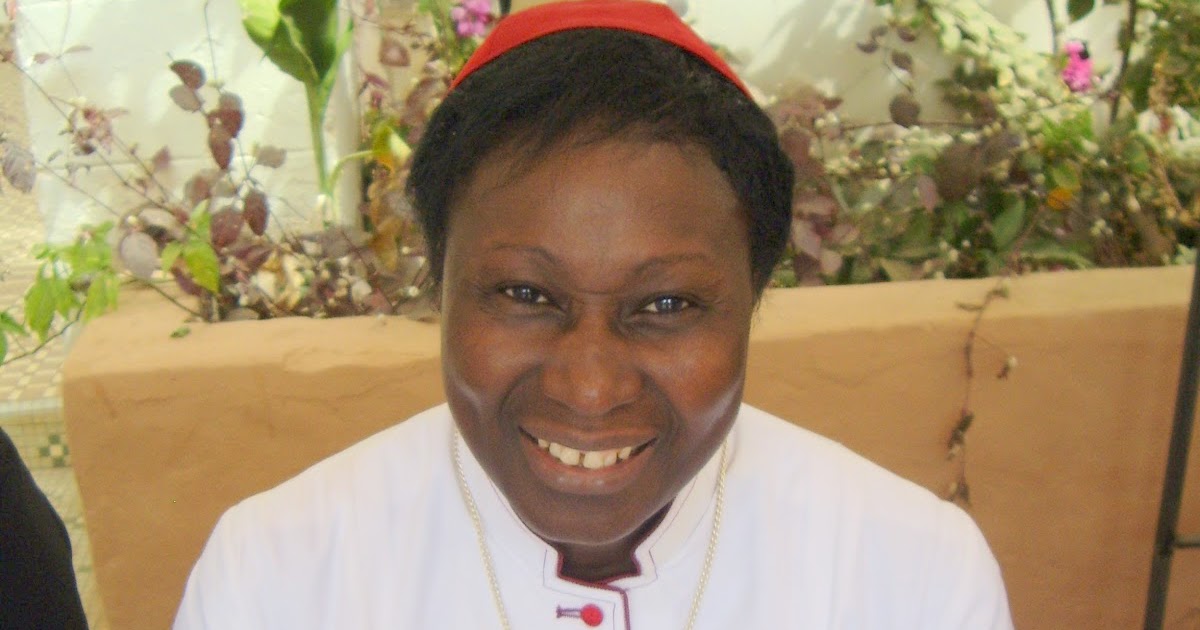My fellow Gambian, the Party Sympathizers of Gambia Unity Party (GUP), and all our supporters both here in The Gambia and in the diaspora. I would like to seize this opportunity to formally introduce to you Gambians our party’s policies, and objectives in order to better understand Gambia Unity Party what it aimed to achieve and do for Gambian if voted into office.
Our Country, The Gambia, is in crisis. One in every four Gambians were unemployed; the cost of living is on the rise day by day; investment both local and foreign has dried up; crime and violence continue to rage; the Rule of Law is under attack; the education and health sectors are on the decline; and our people, especially the young, have begun to lose hope in the future.
I would like to lead a movement for change that puts The Gambia squarely on the path to progressive growth and development by finally casting aside personality and tribal politics and adopting a problem- solving, solutions based approach to governing our plights though.
The Gambia Unity Party (GUP), would like to lead a movement for change that puts The Gambian squarely on the path to progressive growth and development by finally casting aside personality politics and adopting a problem- solving, solutions based approach to governing.
Six years ago a majority of The Gambians voted for Adama Barrow’s coalition party as flag bearer. President Adama Barrow has failed the majority of the Gambians and failed you, as a nation. Most of his campaign promises were never realized or fulfilled; the new constitution for the Gambian, Civil Services reform, Security Sector reform, and Truth Reconciliation and Reparations Commission etc.
However, The Gambia Unity Party (GUP), is committed to a system of justice that is responsive and that works for all Gambians irrespective of their tribes or beliefs. We are also committed to economic justice through job opportunities, widespread land ownership, home ownership and share ownership. Political abuse and corruption will be addressed by taking steps to curb and contain arbitrary arrests, detention, abuse of power and to ensure that citizens have redress against abuse and corruption of any government or parastatal officials. We will engage the judiciary to reduce the backlog of cases before our courts and we will constructively address reforms of The Gambia prison system. The Security Sectors, Civil services and Institutional reforms for a better Gambia for all.
Moreover, Political parties are the cornerstone of democratic societies. They fulfill a number of interrelated functions central to the democratic process of governance. The basic roles of political parties include: • Competing in elections to gain influence over government institutions • Aggregating and representing social interests • Providing a structure for political participation • Providing policy alternatives
By competing in elections, mobilizing behind particular visions of society and through their performance in the legislature, parties offer citizens meaningful choices in governance, avenues for political participation and opportunities to shape their country’s future. Political parties bring together groups of people with common beliefs about the way society should be structured, the role that government should play and the way government and citizens should relate to each other.
When functioning properly, political parties put local concerns in a national context in order to exert pressure upon the political system. In democratic systems, political parties offer citizens opportunities to participate in political life and encourage active links between people and those who represent them. There are a number of ways that political parties can engage citizens: • Actively recruiting new party members • Encouraging members to participate in election campaigns and policy development • Meeting and communicating regularly with members and voters • Collecting the opinions of citizens through tools such as community meetings
These activities help parties communicate more effectively with citizens and build a stronger and healthier political system. The more citizens feel involved, engaged and represented, the more stable and effective a country’s systems of governance will be. In these multi-faceted ways, political parties help to ensure that elections are true expressions of the will of the people.
Political parties provide a means to compete peacefully for political power, both by accepting the responsibility of governance when they have won an election and by respecting the choice of the voters when they have lost.
By effectively promoting their policy positions and consistently reaching out to the public through their elected officials, political parties can demonstrate their relevance and their ability to address citizens’ concerns. Party caucuses, as groups made up of all legislators from a particular party are known, develop and implement their legislative agendas, work to solve their constituents’ problems and publicize their accomplishments in the legislature. While parliamentarians may have some independence to vote as they choose, most parties enforce a certain level of discipline, ensuring that their representatives generally respect the party’s stance on key issues. Parties seek to promote their policies through the work of their legislators on relevant parliamentary committees. Parties can go about this business alone or through informal or formal coalitions. Parties can form coalitions around specific issues or pledge to work together on a more consistent basis to amplify their strength.
The work of parties represented in local bodies closely mirrors that of those represented in national parliaments. While remaining faithful to national party policies, representatives at a local level are geographically closer to their constituents and are thus in a position to tailor their responses and more directly address the concerns of citizens. That said, some local governments lack the financial resources – and the power – to exert a great deal of influence. Regardless, participation in local councils can prepare party leaders for elected office at the national level.
Political parties promote healthy governing institutions by the work they do to deliver for the people and run effective agencies and departments when in government. If an election has been won, a political party (or parties) must take on the exciting and extremely challenging task of governing. This means running the affairs of the country, further developing policy for implementation, overseeing the conduct and performance of government departments and agencies, taking responsibility for how money is spent and delivering on promises made during the electoral campaign.
If you don’t think political parties are important, consider this. How well – and how – parties are developed, organized and managed will impact their readiness to take on the responsibility of running a country effectively. Without strong political parties, it is impossible to have a strong, effective government.
However, it is not just the victorious parties that play a key role after an election. The parties that did not enter government now become the opposition which, when well- organized, makes a critical contribution to the accountability of government institutions. Opposition parties have both a direct interest and a responsibility to monitor the actions and check the power of ruling parties, including putting forward viable policy alternatives that challenge those put forward by the government and provide citizens with both a contrast and a choice.
At times, rather than countering the government, the opposition may work constructively with it to find compromises and better solutions to pressing problems. The importance of political parties should be clear at this point. Unfortunately, in many countries political parties are either too weak, too focused on a few charismatic individuals, too constrained by oppressive governments or too out of touch to play their critical role in democratic governance or to earn the respect and support of the public. As one scholar notes,
“The idea of moving beyond political parties…with all their accumulated deficiencies – certainly holds appeal to people all around the world exasperated to the point of despair with the parties they have… If the political choices presented to citizens were merely a scattering of individuals not organized in groups, it is hard to imagine how a government made up of such individuals would function coherently. If political choices were ordered in groups, it is hard to see how these groups would not quickly take on the characteristics of parties once they started competing for power.” – Thomas Carothers, Confronting the Weakest Link: Aiding Political Parties in New Democracies.
For example, the failure of governments in some Latin American countries to address popular needs – particularly in closing the divide between the rich and the poor – has led to a popular backlash against political parties. Yet many of the citizen movements that the public thought would provide an alternative to parties have begun to look and behave very much like the institution they sought to replace.
Some have even weaker ties to the citizenry and structures and interests that are too narrow to influence national politics. In short, while political parties are not perfect, no other national institution can serve as well to aggregate and represent citizens’ interests. : It’s important to recognize that while they generally play the same roles, there is a great deal of diversity among political parties. For example, parties vary in terms of their: • Size – some parties are quite large while others are relatively small in terms of their membership.
Funding – some parties are relatively well-funded by their members and/or through public funding while others may have more limited resources. Penetration within the country – Some parties have national representation while others may only have strongholds in particular areas of a given country. Ethnic makeup – some parties have an ethnic base and represent one group in society while others are multi-ethnic. Ideology: Parties represent a wide range of political beliefs from ultra- conservative to very liberal.
Some of them may be driven by a religious ideology. Governing vs. opposition: Parties can vary a great deal depending on whether they are governing (in power) or in the opposition. Writing a constitution is one of the early, essential tasks of a democratic political party. Ideally, before a constitution is written, organizers will engage in many discussions about the party’s philosophy and purpose, internal organization and structure and forms of decision-making. The preamble to the constitution is usually the place where a party defines its basic philosophy, values, principles and purpose.
The preamble should answer the question “why does the party exist?” Although the wording of the preamble is usually phrased in broad, general terms, there should be enough specificity to distinguish the party’s principles and goals from those of other parties. Further, party constitutions typically: • Define the internal organization and structure of the party • Outline the internal decision-making process • Define membership eligibility • Classify leadership positions and explain the methods of selecting leaders.
A common political party structure looks something like the pyramid on this slide. Many parties have a conference or convention that takes place on a regular basis during which decisions are made about leadership and/or policies. Most parties have an executive or central committee that is responsible for making day-to-day decisions. Party officers may include a president, vice-president, treasurer, spokesperson, etc. Most parties have regional and local branches as well as subgroups that operate at all three levels – national, regional and local.
At the bottom of the pyramid are the masses. Each sector of the political party is assigned its own roles and responsibilities. Because the internal structures of a political party affect its external behaviors, how each of these levels functions will have an impact on how successful the party can be. Successful parties do not just organize at the national level.
They develop and invest in branches at the regional and local levels as well. This can be challenging work and many parties fail to organize effective structures at the local level. Yet the local base of a political party, just like the roots of a tree, must be strong if the party is to grow and mobilize citizens and voters. To be effective as the local face and voice of the party, local organizers need dependable, regular sources of information from the party leadership, including: Information about the party’s position on issues. Advice on how to discuss difficult or controversial issues. Up-to-date information about political events and developments within the party, parliament and country. Ultimately, the strength and stability of a national political party and the success of its candidates for elective office at every level are closely related to the number of active, enthusiastic party members and supporters at the local level. In addition to branches, many parties also have subgroups and affiliated associations that cater to particular segments of society, and that fulfill specific tasks.
Examples include think tanks, organizations for women or young people, groups based on specific professions such as doctors or lawyers and factions that lobby within the party based on their specific interests. Such subgroups may be wholly independent of the party itself, linked only informally by shared goals and possibly overlapping memberships. Alternatively, some or all of them may have representation on central decision-making bodies within their parties.
Some may receive funding from the “mother” party and may be allocated space and other resources within the party’s national and/or branch headquarters. At every level, there needs to be clarity about exact roles, responsibilities and authority, in order to ensure coordination and coherence. Just as citizens of a nation are entitled to vote in elections, members of a political party should be entitled to select their leaders and candidates for public office freely and according to clear rules. Parties select candidates and leaders through some form of direct or indirect election. Parties often conduct conventions for this purpose. In some cases, the conventions are open to all members. In others, members may elect local or regional delegates to the national convention. Regardless, members should be given regular opportunities to take part in the selection of party leaders at all levels. Members are the lifeblood of any political party.
A political party will be more successful in promoting its policy agenda and electing candidates if it can increase its membership. Members bring money, ideas, energy, expertise, skills and votes to a party. In short, members are a party’s most significant resource. Many political parties enlist their supporters as enrolled members.
A party may distinguish between sympathizers (who perhaps do not pay dues and cannot hold leadership positions, but attend party meetings) and members (who pay membership fees and can elect candidates and hold leadership positions). Rights that party members commonly enjoy include: • Electing the party leadership • Participating in candidate selection procedures • Access to party-only forums, • Receive special information from the party. Political parties that take women’s participation seriously stand to gain on a number of fronts.
Appealing to women is one way to gain party members and supporters and mobilize resources. Including women in platform development will result in a document that represents the interests of and appeals to all voters.
Most significantly, women voters outnumber men voters in most countries simply because women tend to live longer. As such, women voters have the potential to deliver victory in elections. Stephenie Foster led the 1996 effort to help US Democratic candidate Bill Clinton reach more women voters. When fewer women turned out to vote in the 1994 legislative elections, the Democratic Party lost its majority in both houses of Congress. Because the Republican candidate was in the lead among male voters, the Clinton campaign aimed to consolidate its lead among women voters and increase their turnout.
The women’s vote was the decisive factor in the 1996 election, in which they made up 53.4% of the electorate. Parties must approach women’s participation from both a quantitative and qualitative perspective, ensuring that women are represented in leadership in sufficient numbers (at least 30%) and that they are able to exercise real power.
When there are only a few women in power, it can be difficult to mobilize for change. At the same time, there can be a sizable group of women with no real power who have been included just to fill a quota or to make the party look good. For most parties, committing to women’s participation requires self-reflection and significant change. One way for parties to promote the inclusion of women is through the establishment of a strong women’s wing. As we noted earlier, a wing is a party subgroup. Like the “mother” party, the wing can have branches at the regional and local levels. It is critical that the wing have strong linkages to the mother party.
Ideally the wing should have representation on central decision-making bodies within their parties. Wings should also receive funding from the party or be permitted to raise their own funding. Ideally mother parties would also provide wings with office space within their national and branch headquarters. At every level, there needs to be clarity about the exact roles, responsibilities and authority of the women’s wing. If wings are not linked to decision-making bodies and are not given real authority or resources, they risk becoming a way for parties to marginalize and sideline women. #
Today we’ve discussed the need for and some of the key facts related to political parties. We know that effective political parties are the cornerstones of strong, democratic societies. The Effective parties: • Represent social interests and provide policy choices • Vary according to size, funding and ideology but have common structures and elements • Are characterized by transparency in decision-making, internal democracy and frequent outreach and clear communication. Understand the importance of and promote the participation of women. I Thanks you ali.




